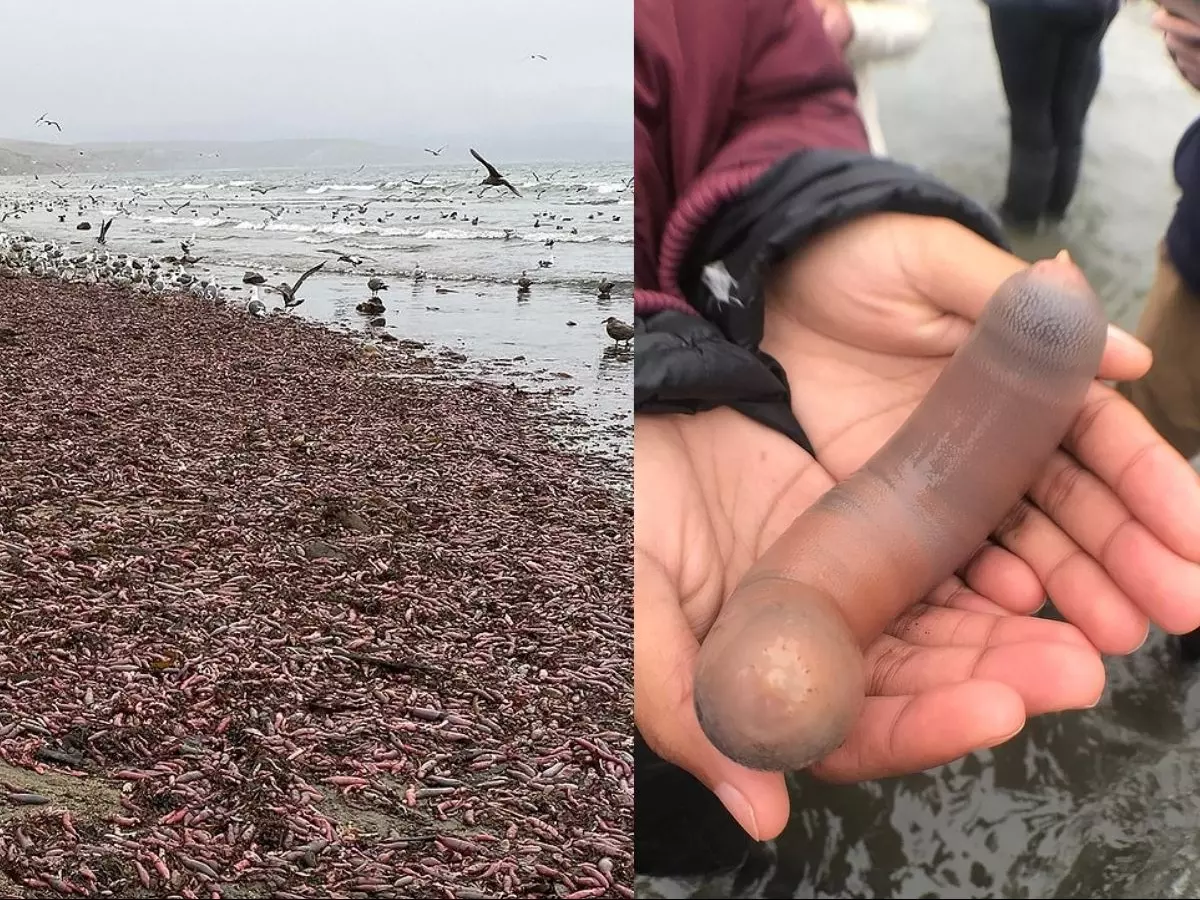Millions Of Penis-Like Fishes Get Stranded On Beach, And It's The Craziest Thing You Will See
These creatures are commonly known as penis fish. However, formally it is termed as fat innkeeper worm. A biologist named Ivan Parr later visited the shores revealed that the fishes would have come offshore after a storm on December 6.

It is no secret that our world is full of strange and weird creatures. And while some of them have been able to gain mass popularity -- like the snakes and spiders and even tardigrades.
However, this recent creature spotted on the shores of California is something that takes the creepy to a whole new level.
 Naturalist/ David Ford
Naturalist/ David Ford
When people living near the Drakes Beach in California decided to go for a morning walk, they saw something that they never would have ever expected to see on a seashore. Some sort of creatures had come off the Californian shore looking a lot like the male reproductive part. And this too in thousands.
These creatures are commonly known as penis fish. However, formally it is termed as fat innkeeper worm. A biologist named Ivan Parr later visited the shores revealed that the fishes would have come offshore after a storm on December 6.
The fat innkeeper is usually 10-inches long with its phalous-like shape. It is known to create U-shaped burrows in mud or sand that actually become homes for other creatures in the sea. That¡¯s also how it gets its name.
They normally live on bacteria, plankton and other small organisms in the water. They cast slime as nets to lure them into the trap.
Parr said in a statement on Bay Nature, ¡°The same phenomenon has been reported over the years at Pajaro Dunes, Moss Landing, Bodega Bay, and Princeton Harbor. 'I've heard my share of imaginative theories from beachcombers, such as flotsam of a wrecked bratwurst freighter. In truth, these are living denizens of our beaches rudely, yet also mercifully, mostly called 'fat innkeeper worms.¡±
 Getty
Getty
Fat innkeepers are known to be on Earth since quite some time as the U-shaped burrows that they form can be dated all the way back to 300 million years.
What¡¯s more interesting is the fact that while this creature might seem odd and rare to you, it is a beloved delicacy in China, Japan and South Korea, where it is consumed either raw or with a sesame oil dip. It is known to be chewy with a sweet-salty flavour.
